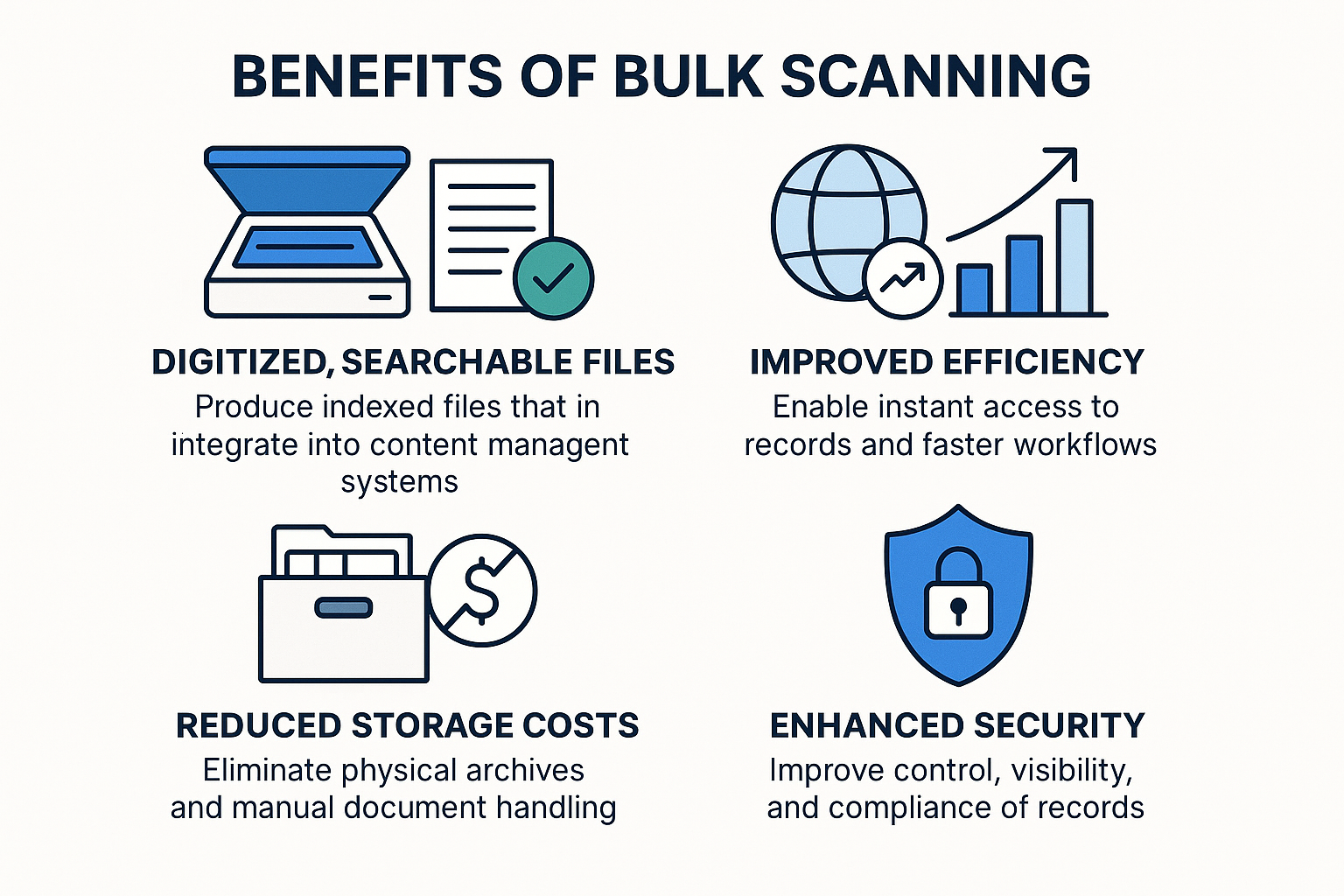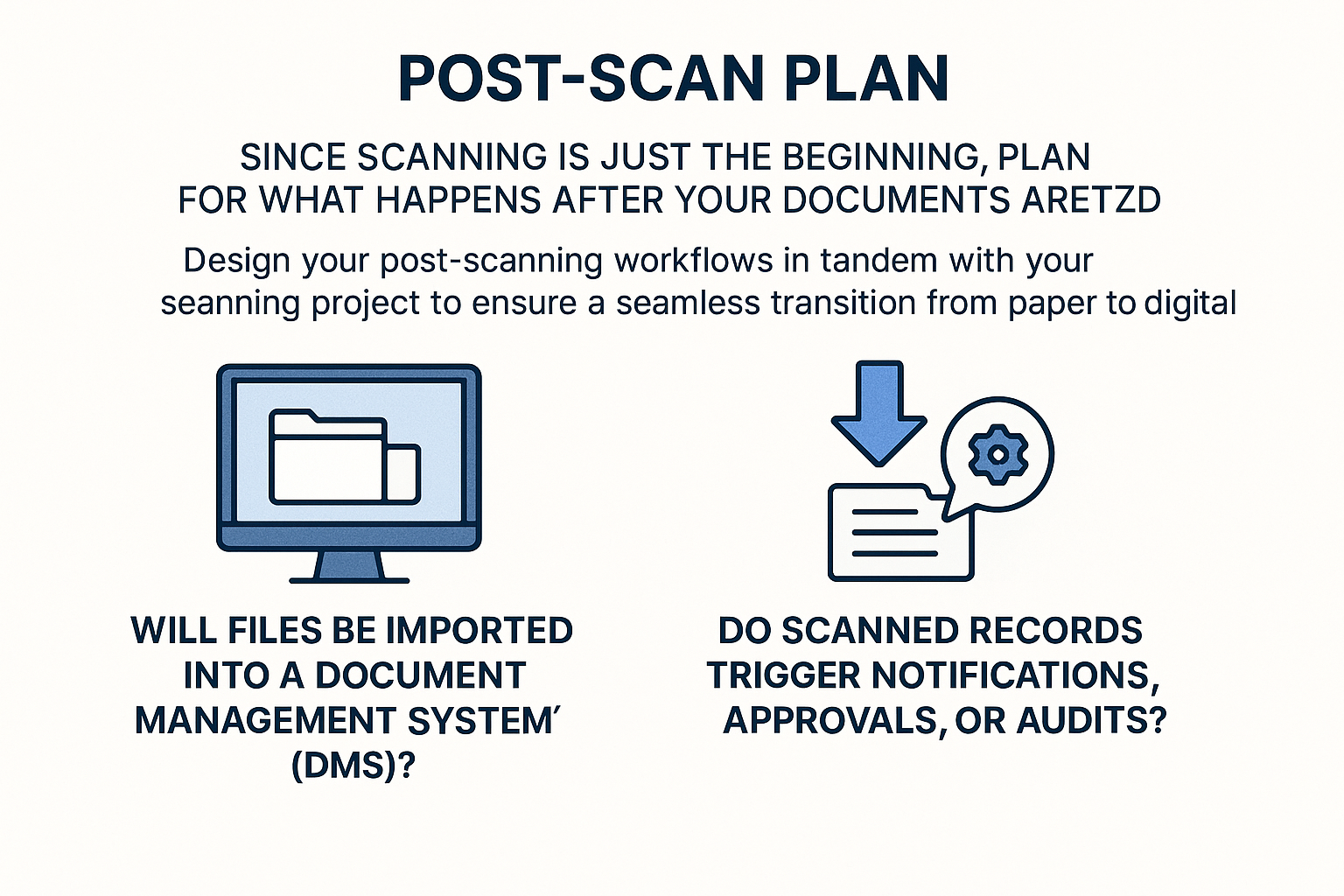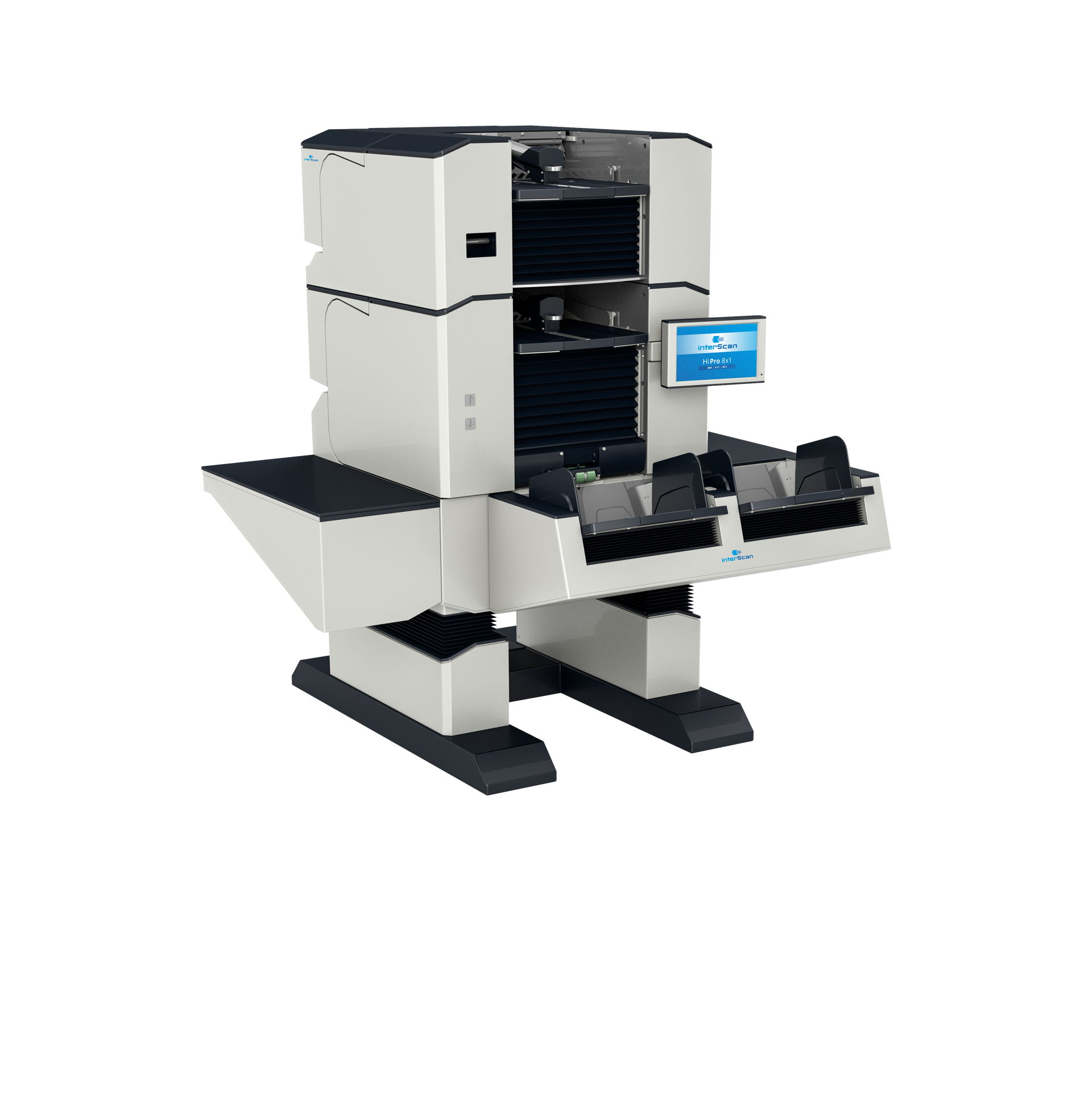Best Practices In Bulk Document Scanning
Bulk scanning has become increasingly popular and necessary with businesses focusing on streamlining operations, reducing paper storage, and the need to access critical information and records quickly. But what is it, and why should you care?
What is bulk document scanning
In the simplest sense, bulk scanning, also known as bulk document scanning, is the process of digitizing large volumes of physical documents, in bulk, into electronic formats using high speed scanners and intelligent software. As you can imagine, the bulk scanning of documents is necessary across a wide range of industries, including government, healthcare, insurance, law, and utilities, for various reasons.
Benefits of bulk scanning
The goal of bulk scanning is not just to create digital copies, but to produce searchable, indexed, structured files that can integrate seamlessly into existing content management and enterprise content management systems.
When done correctly, it drastically improves efficiency, enhances compliance, and unlocks valuable data that is typically trapped in paper and nearly impossible to find. By eliminating physical archives, organizations can immediately see a reduction in storage costs and a significant improvement in productivity and efficiency, as they have instant access to records and data from any location. Additionally, you can also benefit from faster workflows and processes, thanks to automated document routing and indexing.
Finally, security and compliance can be significantly improved through bulk document scanning, which transforms paper records that are often difficult to protect, track, and audit. Bulk document scanning can ensure your digital assets are secure with enhanced control, visibility, and traceability.

What are the Best Practices Of Bulk Scanning
1. AUDIT: Conduct a document audit before starting your bulk document scanning project to understand precisely what you are working with. This will save you considerable time if done right from the beginning. What do you need to know?
- The volume of documents to be scanned. This will determine the speed of the scanner you will need. Usually very high in bulk scanning.
- The types of documents to be scanned.
- The condition of your documents. (Are they so fragile that you need a flatbed scanner, or will you need to prepare them specially?)
- The priority of your documents. If you are dealing with millions of records, prioritize based on what you will need access to the most, and which documents may not require scanning at all.
- Retention rules and compliance for each document type.
2. PREPARATION: This can be incredibly time-consuming in bulk scanning. Still, it is crucial to minimize the time spent on unnecessary tasks and avoid mistakes such as paper jams, poor image quality, or misfeeds.
- Remove staples, paperclips, and sticky notes.
- Repair or set aside damaged or incredibly fragile documents.
- Group documents together based on type or process.
- Organize your documents in the correct order or sequence.
- Identify separator sheets or barcodes for batch detection.
3. HIGH SPEED DOCUMENT SCANNER: Not all scanners are created equal when it comes to bulk document scanning. For high volume projects, choose a production level scanner, like the
HiPro or
JetPro Series by interScan that is made for bulk scanning with the features you need:
- High daily duty cycles.
- Duplex scanning.
- Advanced image processing (deskew, despeckle, cropping, color dropout).
- High speed (ensure the speed advertised is the speed it will output).
- Automatic feed system (The HiPro scanner offers a dual hopper for bulk scanning).
- Barcode recognition.
3. HIGH SPEED DOCUMENT SCANNER: Not all scanners are created equal when it comes to bulk document scanning. For high volume projects, choose a production level scanner, like the HiPro or JetPro Series by interScan that is made for bulk scanning with the features you need:
- High daily duty cycles
- Duplex scanning
- Advanced image processing (deskew, despeckle, cropping, color dropout)
- High speed (ensure the speed advertised is the speed it will output)
- Automatic feed system (The HiPro scanner offers a dual hopper for bulk scanning)
- Barcode recognition
4. SPECIALIZED SCANNERS: Have a scanner ready for your unique digitizing needs. Although the majority of your bulk scanning project may consist of standard-sized documents, be prepared for anomalies that can be time-consuming.
- Flatbed scanner for torn or ultra fragile documents.
- Book scanners for bound books, you cannot destroy.
- Large-format scanners for large drawings.
5. INTELLIGENT SOFTWARE:
When paired with the right scanner, powerful and intelligent scanning software, such as
CrossCap
or
JetStream AI, makes the process truly automated, which is crucial for bulk scanning. Ensure your software includes:
- OCR (Optical Character Recognition) to convert images to searchable text.
- ICR (Intelligent Character Recognition) to read handwriting.
- Auto-Classification to sort documents by type or content.
- Metadata Extraction for fields like dates, invoice numbers, or client IDs.
- Integration with enterprise content management systems (ECM) or document management systems (DMS).
- IDP (Intelligent Document Processing) enables more advanced workflows, allowing software like JetStream AI to accelerate bulk scanning by training models to extract data with minimal manual setup.
6. QUALITY CONTROL: Establish a process that incorporates checkpoints at each stage of the process. In bulk document scanning, even minor issues, such as missing pages or a deskewed image, can cause significant problems downstream if not detected early. Establish a process that includes:
- Visual checks of the scanned output.
- Spot-check OCR and ICR accuracy.
- Review metadata accuracy.
- Create redundancies for human error.
- Validate workflows for critical data points.
7. FILE NAMING & INDEXING CONVENTION: To ensure long-term usability, you need to create a consistent way to name, store, and retrieve files. Best practices for bulk document scanning include:
- Use descriptive file names (i.e., customer name_invoice_date).
- Apply consistent folder structures (by date, file type, client, etc.).
- Tagging with metadata for fast searches (i.e,. project ID, department, status.
- Choose file formats wisely (PDFA for compliance, TIFF for archival, JSON for structured data).
8. SECURE & ARCHIVE:
Data security is crucial in any bulk document scanning project, particularly when handling confidential or regulated documents. Creating an effective strategy will ensure your scanned documents remain accessible, protected, and compliant for years to come. Consider:
- Encrypting scanned files during storage and transmission.
- Setting role-based access controls for document access.
- Backing up files to a redundant cloud or physical storage.
- Using document retention policies to govern how long files are stored.
- Ensuring compliance with standards set by ISO, HIPAA, and IRS.
9. TRACK PERFORMANCE:
For large-scale bulk scanning of documents, it is important to track metrics and monitor performance to help identify bottlenecks and improve overall efficiency. Metrics commonly include:
- Number of pages scanned per day.
- Error rate and re-scan percentage.
- Time spent on prep time, versus scan, versus QC.
- Indexing speed and accuracy.
- Throughput of scanner and its operator.
10. POST-SCAN PLAN: Since scanning is just the beginning, plan for what happens after your documents are digitized. Design your post-scanning workflows in tandem with your scanning project to ensure a seamless transition from paper to digital. Things to consider for your bulk document scanning project:
- Will files be imported into a document management system (DMS)?
- Are there downstream processes that rely on extracted data?
- Do scanned records trigger notifications, approvals, or audits?
Bulk document scanning is a powerful step toward digital transformation, but it requires a structured, well-thought-out plan and approach to be effective. From document prep, scanner, and software selection to software integration and quality control, each step contributes to the success of your bulk scanning project. If it seems like a lot, it is!

Bonus Best Practice!
If this seems overwhelming, consider outsourcing your bulk document scanning project to a qualified scanning service bureau or scanning service provider. They are truly specialists in bulk scanning. They have access to high-speed, high-volume, high-capacity document scanners, such as the HiPro or JetPro. They have experienced staff to handle complex preparation and quality control, which means faster turnaround times. Ensure that you vet your vendors carefully to select a qualified and reputable partner. Want to know more
contact us.
If you are starting a high-volume scanning project and want to explore automated, intelligent solutions, consider working with a trusted provider like interScan. We offer the
highest-quality production scanners,
capture software, and
intelligent document processing software on the market to ensure your bulk document scanning project's success.

